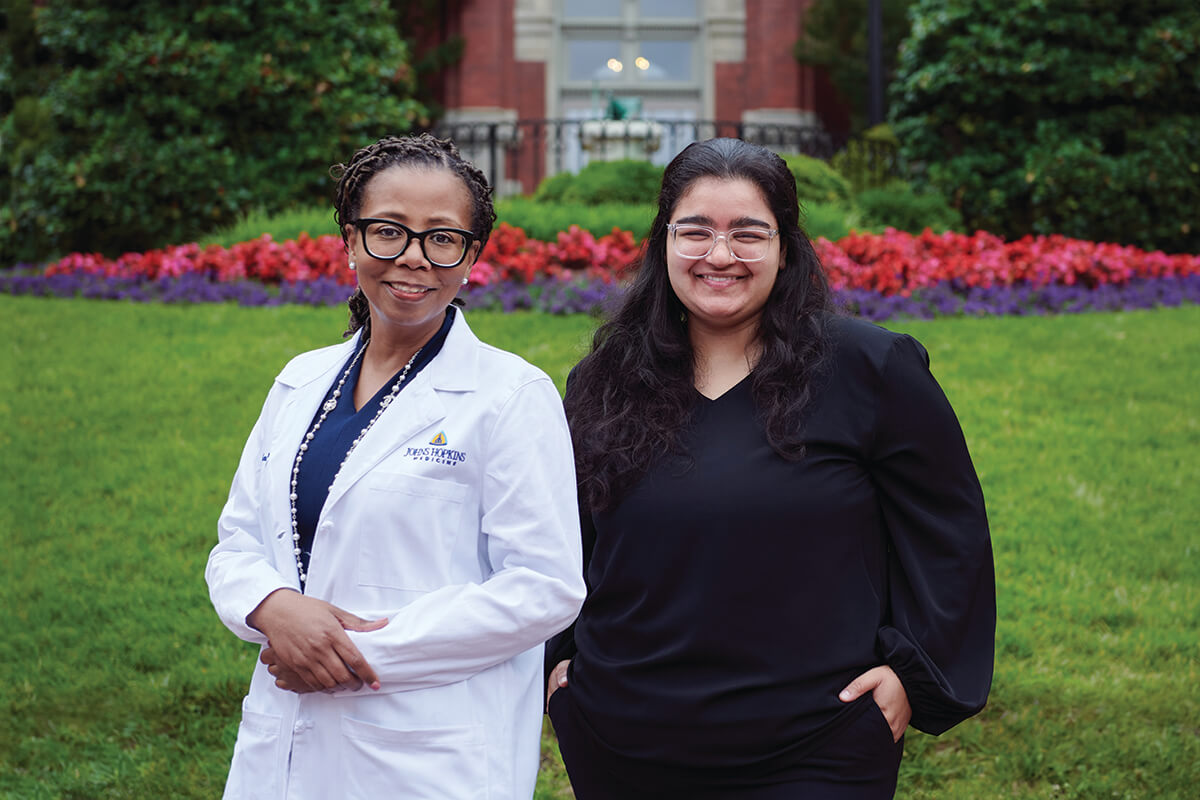GameChangers
The Violet Project is Giving Young People Real Answers to Sexual Health Questions
The one-stop-shop digital health platform also provides resources like free STI testing, menstrual and contraceptive products, and a direct line to health care professionals.

Many young people with questions about reproductive and sexual health have few places to get real answers. Dr. Jenell Coleman, an associate professor of obstetrics and gynecology for Johns Hopkins School of Medicine and the director of one of the organization’s largest women’s health clinics, saw the impact of this firsthand while working with young women in clinical settings.
To meet young people where they are—online and on social media—Coleman teamed up with Saumya Sao, a clinical researcher at Hopkins and an advocate for equitable access to sexual and reproductive health education. The resulting Violet Project, launched in October 2021, is an online platform offering young people approachable answers to their questions alongside resources like free STI testing, menstrual and contraceptive products, and a direct line to health care professionals. (To donate menstrual products to the cause, visit the org’s website.)
Here, they talk about the need for this resource, the importance of peer education, and the organization’s future.
What inspired the creation of The Violet Project?
Dr. Jenell Coleman: Some of my favorite populations to work with are adolescent girls and young adult women. But in clinical encounters I hear all these myths and misconceptions—mind-blowing things where I’m left wondering, where did they get this information from? I wondered, how can I do more to teach them about their reproductive and sexual selves besides just the interaction that I have with them in the exam room? I wanted to develop a website to reach, primarily, adolescent girls. When Saumya and I started working together it turned into The Violet Project.
Saumya Sao: We started brainstorming ideas on how we could make a one-stop-shop digital health platform. We did a review of how adolescents are getting access to sexual and reproductive health information, and we realized that there wasn’t anything out there that really displayed information in a way that was digestible, but also that had enough information. One thing that’s really unique about our educational content is it’s very comprehensive, but it’s very interactive.
Why is sexual reproductive health care education so important for young people?
JC: I take care of women throughout their entire reproductive life span. Some of the conditions and ailments are preventable and they’ve probably happened when they’re an adolescent or young adult. Part of the reason I wanted to target this population was to provide a foundation of accurate knowledge and empower them to learn about being a sexual being in this world.
SS: Especially in our current political landscape, attacks on sex-ed are increasing by the day. So creating resources to make sure that adolescents don’t lose what access they have, and to create innovative ways for them to get more access, is really important.
What inspired the project’s name?
SS: We were looking at a list of flowers to get some inspiration on design and the last flower on the list was violet. And I realized Violet could be the name of a person, it could be a color scheme. So we created this concept sketch with Violet the character leading folks through the website, saying “Congratulations for making the first step in your sexual reproductive health journey.” It’s grown to include a lot of other characters with different sexual orientations and gender identities on different sections of the website. It just blossomed from that one original idea.
“In clinical encounters I hear all these myths and misconceptions, mind-blowing things where I’m left wondering, where did they get this information from?”
How has The Violet Project evolved and grown?
JC: Violet has gone through many iterations as we continue to address the needs of the community. One example is at the OB-GYN clinic, we often offer a sanitary napkin at the end of a visit. During one encounter when I asked the patient if she wanted a sanitary napkin she asked if she could have the whole package, which probably had 30 or 40. I was a little shocked, because even though I did this for a living, I didn’t realize that there were people that may not have access to sanitary supplies. Addressing period poverty was something that was born out of the clinical care piece.
Why is peer education an important part of the Violet platform?
SS: We really wanted to engage youth in the community in this project because we knew we needed their buy-in, we needed sustainability, and we wanted youth to drive the direction of the website. Today we have 90 peer educators ages 18-24 who give educational demos and distribute free Violet packs in nine clinical settings. Providers have noted that they’ll know when a Violet volunteer has already seen a patient because it tends to open up a door for a really good conversation that might not happen otherwise.
What is your vision for the project’s future?
SS: Our mission has always been to make sexual reproductive health care and education more accessible to youth throughout Maryland. Now that we are very well-established in Maryland, we’re asking ourselves how we can get this resource out to more folks who need it in other geographic locations.
JC: Our work is informed by clinical care and research, and part of our goal with Violet is to disseminate all the knowledge so that it can permeate into other communities. Not only is The Violet Project sustainable, it’s scalable as well.